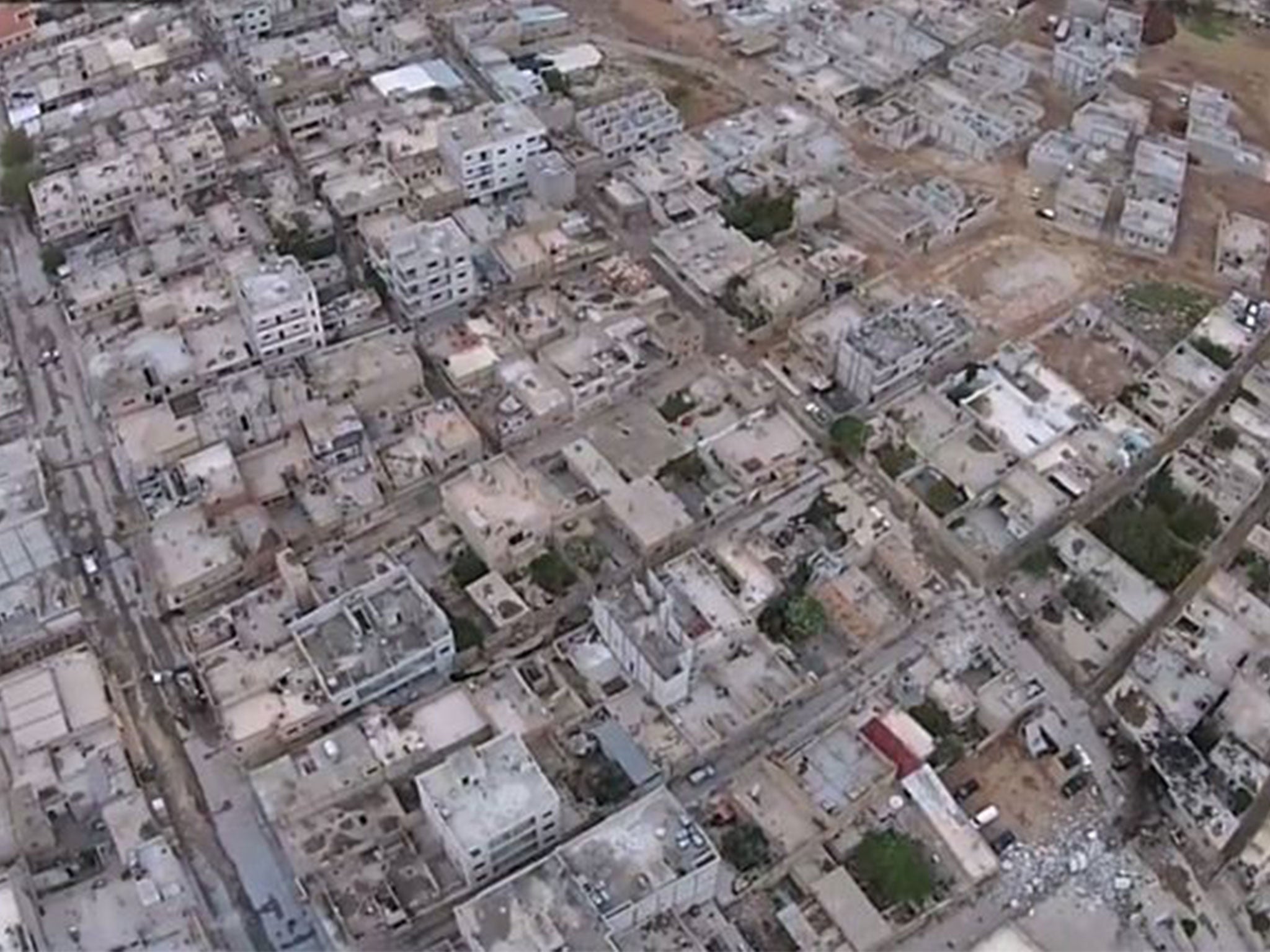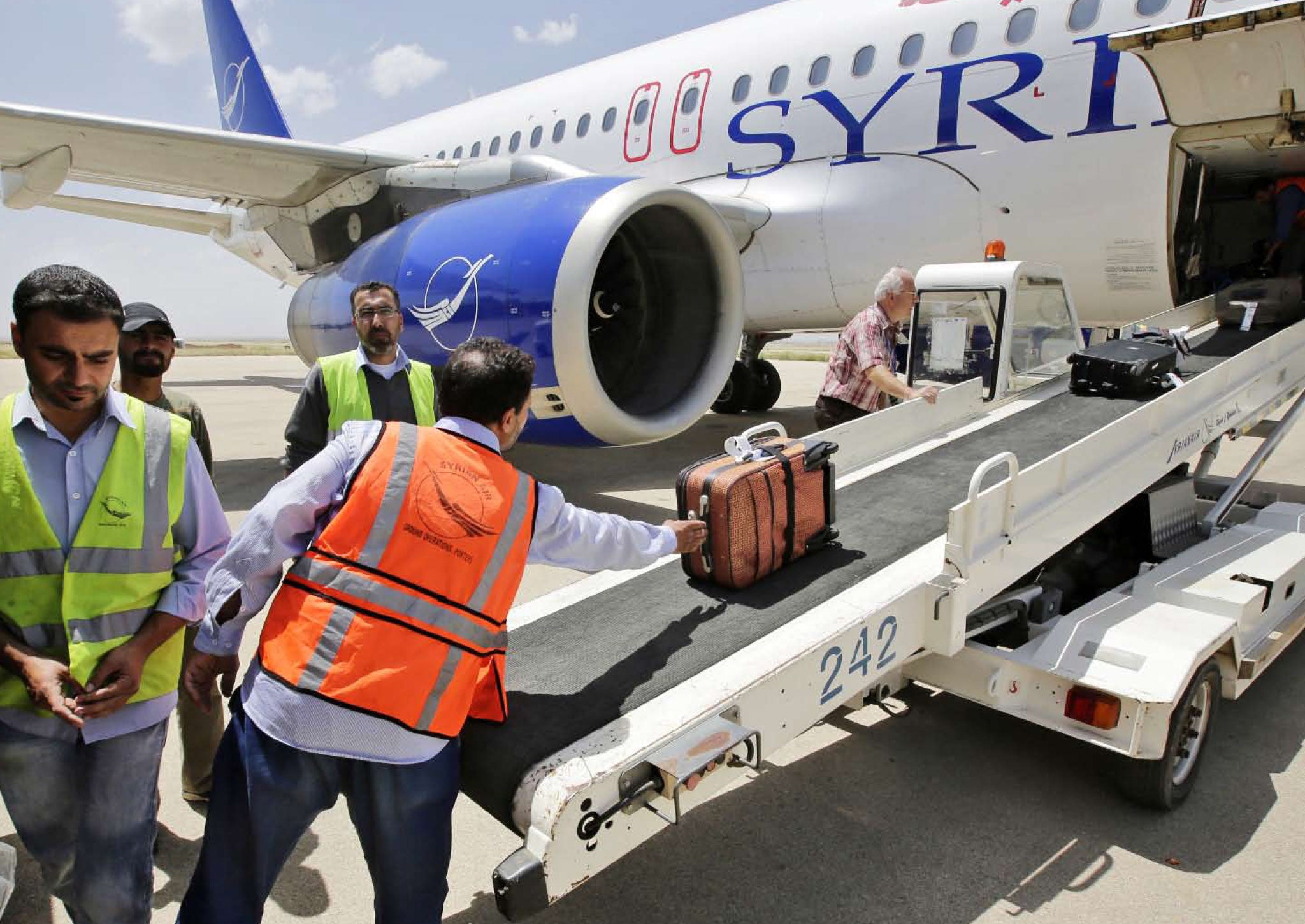What does the Isis heartland look like from the skies? I buckled up my seat belt to find out
Oil pumps, anti-aircraft guns and long-range artillery reveal the jihadist machine at work

Your support helps us to tell the story
From reproductive rights to climate change to Big Tech, The Independent is on the ground when the story is developing. Whether it's investigating the financials of Elon Musk's pro-Trump PAC or producing our latest documentary, 'The A Word', which shines a light on the American women fighting for reproductive rights, we know how important it is to parse out the facts from the messaging.
At such a critical moment in US history, we need reporters on the ground. Your donation allows us to keep sending journalists to speak to both sides of the story.
The Independent is trusted by Americans across the entire political spectrum. And unlike many other quality news outlets, we choose not to lock Americans out of our reporting and analysis with paywalls. We believe quality journalism should be available to everyone, paid for by those who can afford it.
Your support makes all the difference.Syrian Arab Airlines flight RB131 took off from Damascus International Airport to far-away Qamishli at 8.35am for its journey over Isis country, flying at an altitude of 17,000ft. Just how an airline can still function amid Syria’s tragedy – it has five working airbus A320s and one Franco-Italian ATR turboprop aircraft still in service – is a mystery to me.
But sure enough, the usual safety instructions were read, passengers were ordered to buckle their seat belts (a good idea on this particular flight, I thought) and Captain Zaher gave us a flight schedule on the ATR’s journey that would take us far over the deserts inhabited by the Islamists whom Washington describes as “apocalyptic”. Amazing that anyone climbed aboard, if you ask me. But the little plane was packed, and Zaher – his real name – invited his rare Western guest to the flight deck, where I sat mutely on the jump seat behind First Officer Mohamed as we soared into the ether, east over grey-black deserts.
The aircraft’s Acas (Aircraft Collision Avoidance System) dial searched the skies for 20km around us. Who, after all, wants a close shave with an American drone or a low-flying Nato jet? But the pale blue sky was empty. No other commercial flights dare to fly these airways. But these pilots turned not a hair. They gained their licences in the US, Zaher training at Tulsa, Oklahoma, and Mohamed at Dallas, Fort Worth. Zaher, who is 38, has three children. Yes, he said, the two older ones understood his job. So did either Zaher or Mohamed, I asked, see American planes in the skies over Syria?
Zaher flicked through his diary. He had spotted a Hercules C130 over Qamishli at 21,000ft on 24 October, while Mohamed said he had spotted several Nato fighter-bombers to the east some days earlier. They saw no air strikes. The aircraft appeared to have crossed the Turkish border and flown over Hassake province, probably from the direction of Incirlik in Turkey, en route to Kobani – which, of course, the Syrians call Ain al-Arab. Far below, a gas plant appeared, then the Shedadi oil and gas wells, a grey smog spreading south, pumping out money for the “Islamic State” that stretched far in front of us, all the way to the gates of Baghdad. At night, Zaher and Mohamed can see the butane gas flaming below them, proving that Isis is working these Syrian treasures.
No Syrian passenger aircraft any longer routes over Raqqa – Abu Bakr al-Baghdadi’s Syrian “capital”, where his lads occasionally do a little beheading and even crucifixion in the town square – but we flew directly over the city of Deir el-Zour, where government troops still hold part of the town; there was brown smoke eddying from the eastern sector, one bridge over the green Euphrates broken in half, Isis and Jabhat al-Nusra fighters still trying to wipe out the last garrison. Neither pilot believed Isis had ground-to-air missiles – not yet, at least – and they dismissed the reports that two captured old MiGs had been put back into the air by the Islamists. “They don’t fly because they can’t fly,” Zaher said. “They’ve not even got any radar.” I certainly hoped not.

Flying north, it took only 20 minutes before the mountains of southern Turkey fringed the horizon, white to the east near Cizre, cold grey to the west, and it was comforting to hear Qamishli’s ground control telling Zaher he was clear to land. Neither captain nor first officer had served in the Syrian air force – contrary to the old myth that every Arab commercial flyer trained in fighter jets – and the airstrip came up amid the southern fields of this most isolated of Syrian towns. A perfect landing, of course; Syrian pilots used to win international awards for their flying, one of them at Manchester, in the days when the airline flew to Western Europe.
And there beside the strip were batteries of anti-aircraft guns and long-range artillery, Russian 155s and more boxes of ammunition stacked in the triangular firebase than I’d seen since the 1980-88 Iraq-Iran war. A smiling colonel greeted me with a handshake that almost broke my fingers, and a soldier asked him casually whether the local Syrian fighter jets should be re-armed. Yes, said the colonel casually. Another mission was to be operational the same day. In Syria, you can’t forget the war. Why, you can even look down from the heavens with a cyclopean eye on Syria’s enemies.
Join our commenting forum
Join thought-provoking conversations, follow other Independent readers and see their replies
Comments